We awoke very, very early for our boat ride down the Ganges this morning. My heart was racing, almost like it did when I visited such places as the Vatican. We took a bus as far as we could, but as we got closer to the river, it was impossible to maneuver the crowds so we walked the short distance left.
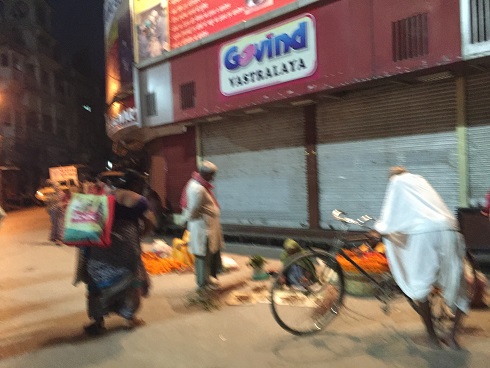
Obviously not quite awake yet, my pictures were not so clear. I wake up in about 10 pictures so don’t abandon yet.
These vendors were out early selling their offerings to passersby on their way to the river.
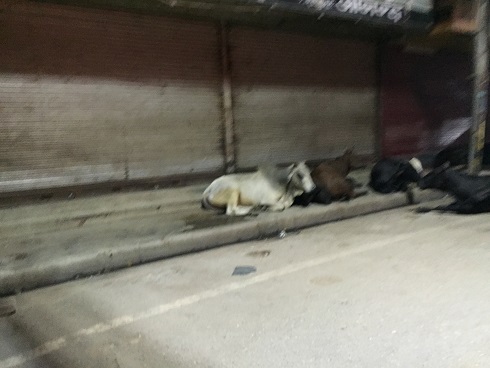
These cows did not seem to be in any hurry to go anywhere, they just laid off to the side of the street.
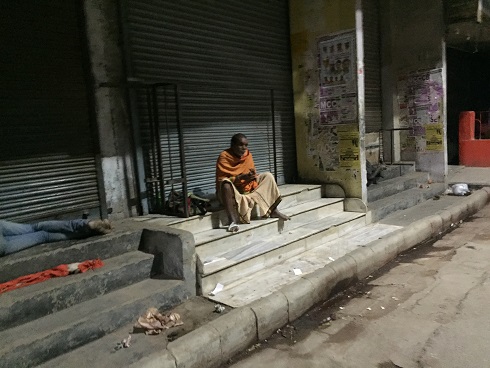
Some of the people living on the street were beginning to awaken.
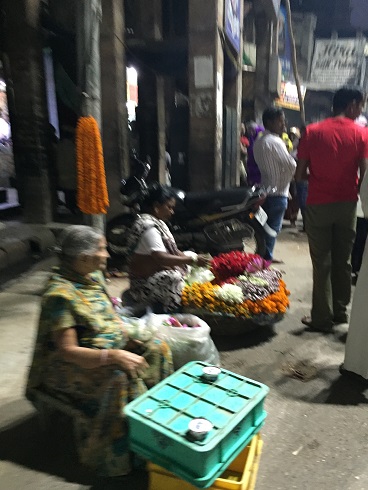
Again the flower ladies were hoping for business. They had been up, I am sure for hours, getting ready for the day.
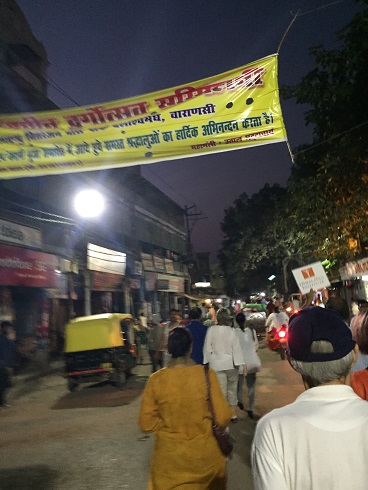
There were even people selling containers so that you could take some water from the Ganges home. Don’t know how that works on airplanes, I guess your checked luggage would have to carry it.
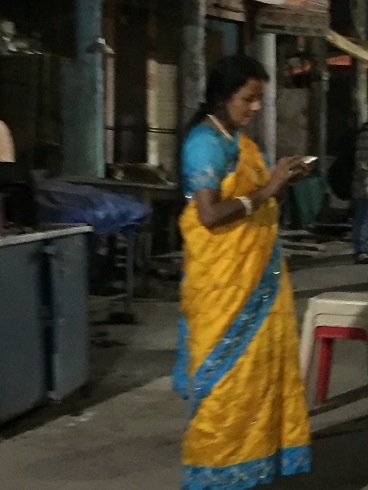
I loved this saree, so bright and happy. She was busy on her cell phone…some things are just universal LOL!
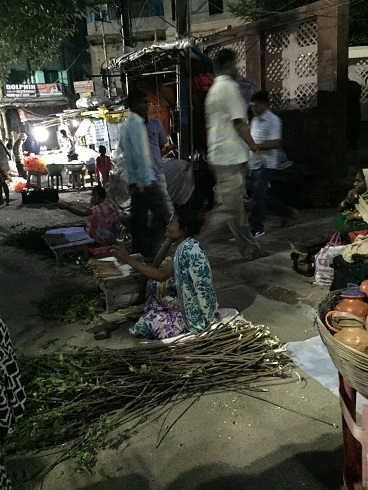
Here is a lady selling neem branches. Neem is an antiseptic herb found in tooth paste. These branches can be used as tooth brushes. If you are an Ayurveda client of mine you will be very familiar with neem. I put it in most of my face masks for acne treatment.
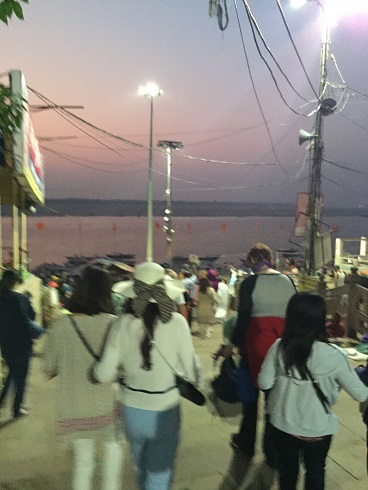
Then we caught our first glance of the river. I don’t really know what I expected, maybe it to not be so wide. But it just drew us towards it.
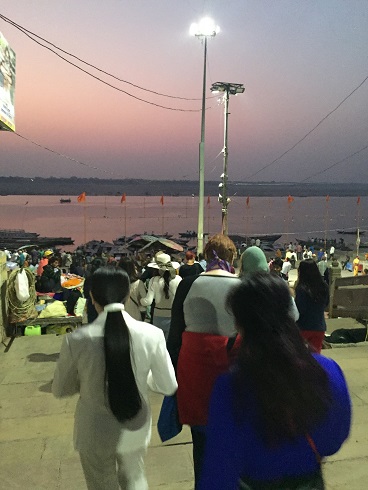
Many people were arriving, either for boat rides or a morning bath. Once you got near to the river, there were ghats, or stairs that took you down to the boats.
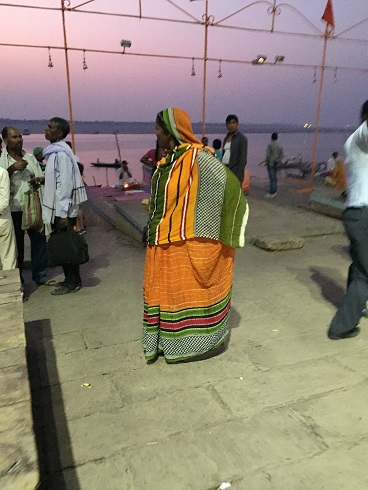
Another beautiful saree.
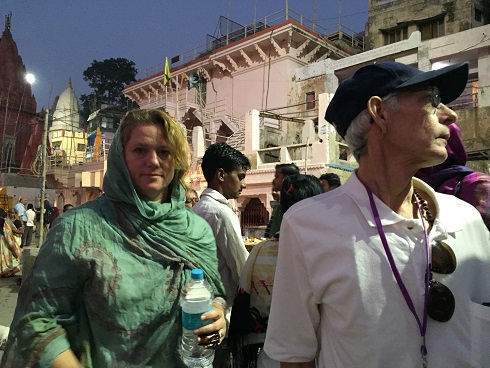
We looked in awe almost not being able to take it all in. The river, the people, the architecture, the culture….so much energy, so phenomenal.
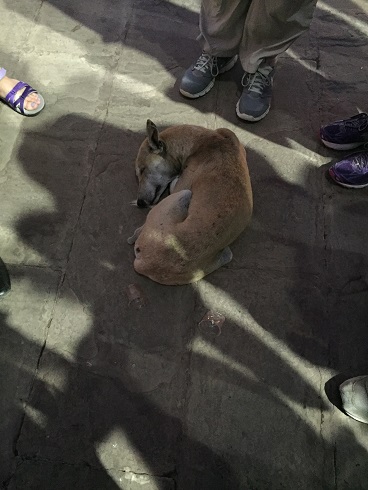
Of course some weren’t that impressed. These dogs can sleep anywhere.
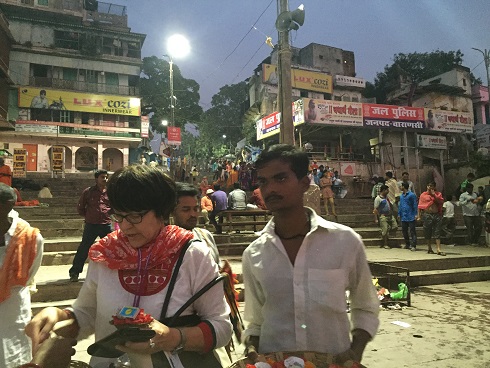
There were vendors selling water, flower offerings, malas, and jewelry. Here Lea is buying an offering from this man.
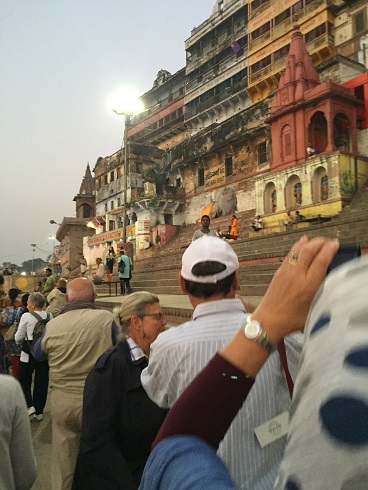
Once down the steps, looking back up at the buildings and steps was magical and mystical both at the same time. We were at the Ahilya Ghat.
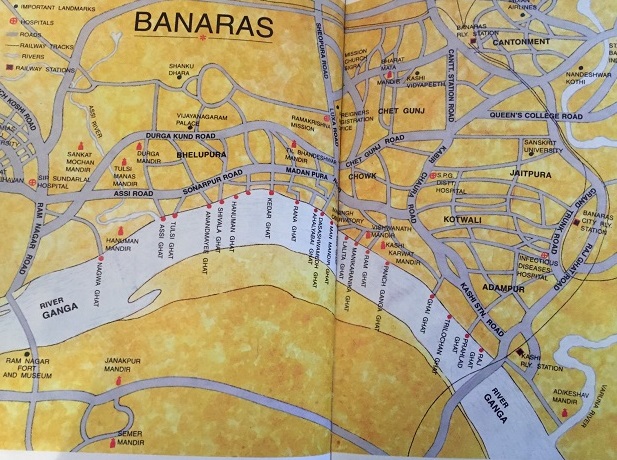
Here is a map of Varanasi with the River Ganga showing all the different ghats. The red dots at the end of all the little streets that are sitting on the edge of the river designate all the different ghats or stairs leading down to the river. Each ghat has a different philosophy behind it, so if you were to bathe in the river, you would go to a specific ghat for specific reasons. These ghats are also used as directions, much like a name of a street.
“Once upon a time there was a king called Bhagirath whose ancestors had willfully disturbed the deep meditations of a muni (sage) called Kapila. Kapila’s angry glance burnt them to ashes and their souls were left trapped in the netherworld, unable to cross over to heaven. Bhagirath prayed to Brahma for advice to bring deliverance to his ancestors. Brahma told Bhagirath that their souls would be liberated only if their ashes were immersed in the cleansing waters of the river Ganges that flows in heaven. Bhagirath then prayed to the goddess Ganga to come down to earth. Though the ever-merciful Ganga agreed to help Bhagirath, there was a problem: if the river of heaven were to descend to earth directly, its force would destroy the world. Bhagirath solved the problem by enlisting Shiva’s help. The god of the Himalayas received the shock of the torrent on his mighty head. Meandering through the forests of his locks, the river flowed out on to the earth, following Bhagirath from the Himalayas to the point called Ganga Sagar in the Bay of Bengal, where it entered the netherworld and rescued the ancestors of Bhagirath. During the journey of the Ganges from the Himalayas to the Ganga Sagar, trouble arose when it reached Banaras. Seeing the lovely city, Ganga did not want to go further and almost turned back. It was with great difficulty that Bhagirath persuaded the river to carry on. If you look at the river in Banaras, you will see that it curves to the north almost as if flowing back in the direction of its source. And it is on this curve, shaped like a crescent moon, the great stone ghats of Banaras have been built.
The Ganges is sacred everywhere in India, for the Hindus believe that the river washes away sin, and that if the ashes of the dead are immersed in it, the soul goes to heaven. But it is especially sacred in Banaras. The riverfront attracted in the past, and continues to attract today, not only millions of ordinary devotees but also some of the most famous men and women of India. The very gods, they say, come to bathe in the Ganges at Banaras (Varanasi). A walk down the riverfront is a walk down the flowing stream of Indian culture.” (Banaras, Roli Books)
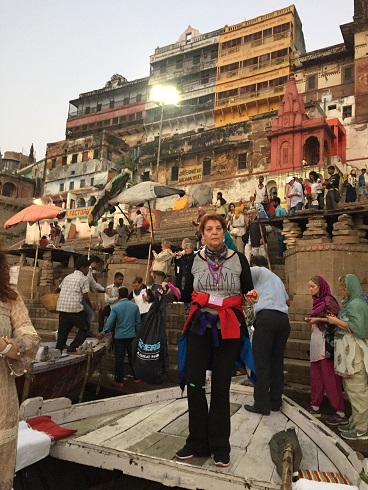
We began to board the little wooden boats that would take us down the river.
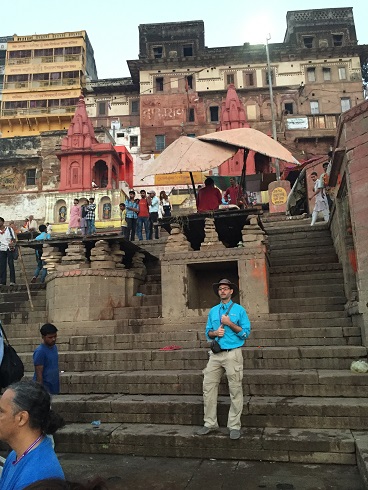
From the boats, the picture taking got really fun. I actually took out my IPad and used it. Here is Joseph looking out onto the river.
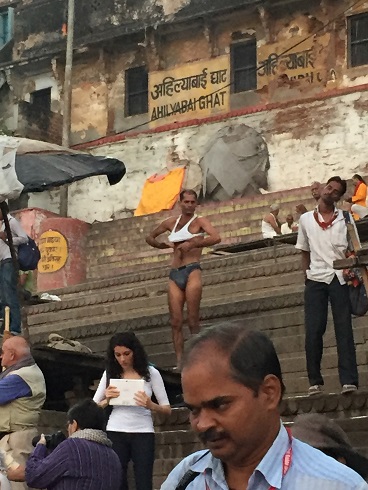
The bathers were right by the boats,
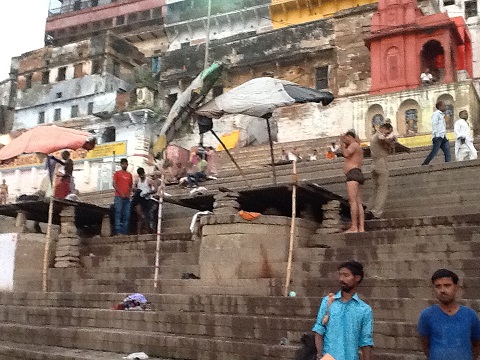
The would go up onto the steps to dry off and get dressed.
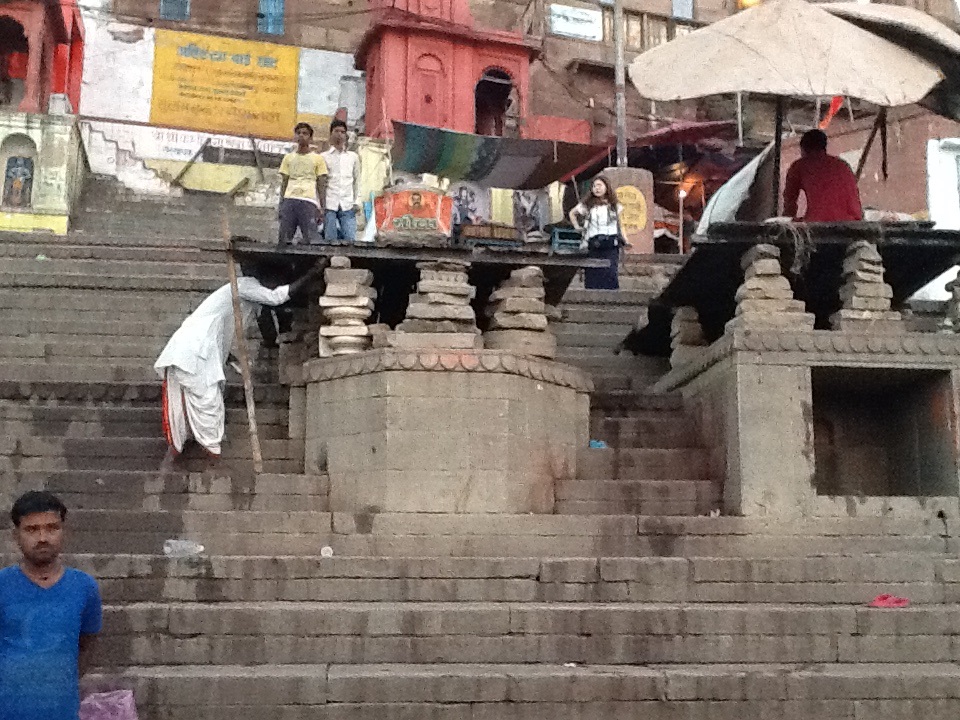
I wasnt quite sure what was going on here, other than they had found a way to elevate this wood by piling rocks on top of each other…

Our guide gave us a little intro to the river as we make our way away from the shore
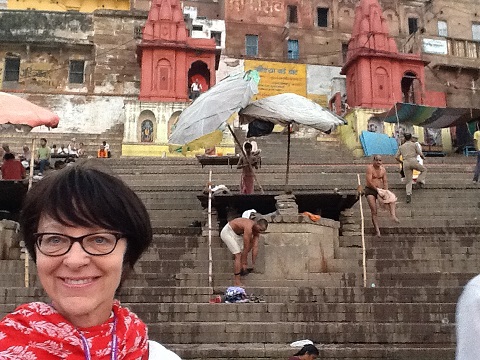
I catch Lea as she enjoys looking out over the river, with the bathers behind her in the background
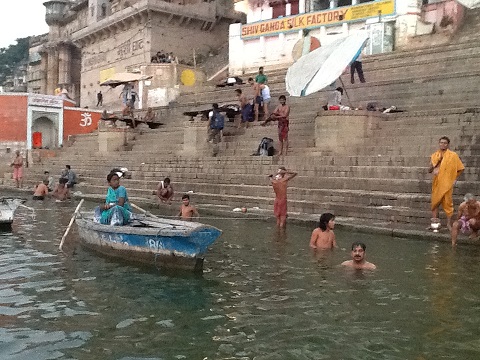
More bathers
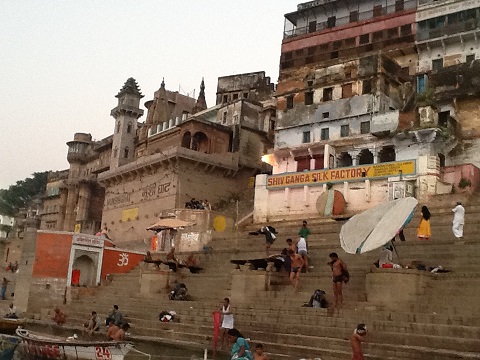
The buildings were so interesting. Many were temples, some were homes.
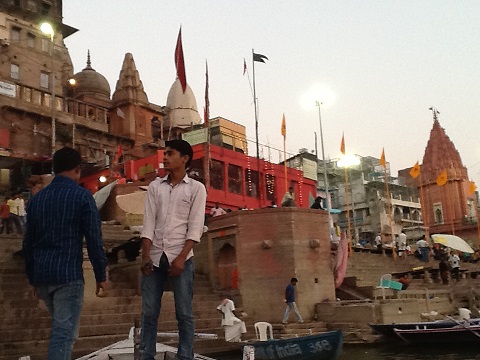
Many boats were leaving at the same time, just perfect for catching the sunrise. These two guys were on another boat right next to ours.
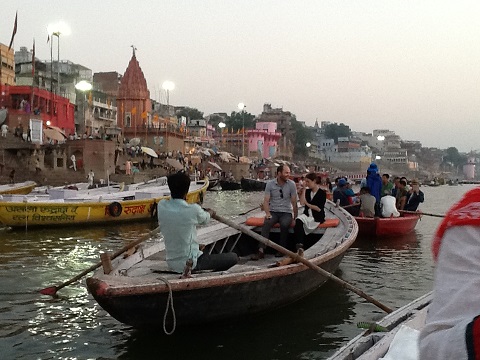
Some boats had big groups, some just couples
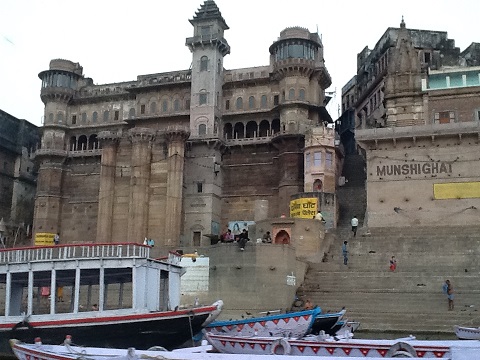
This is the Darbhanga Palace at Munshi Ghat. I think it was one of the more distinguishable ghats of all that we saw.
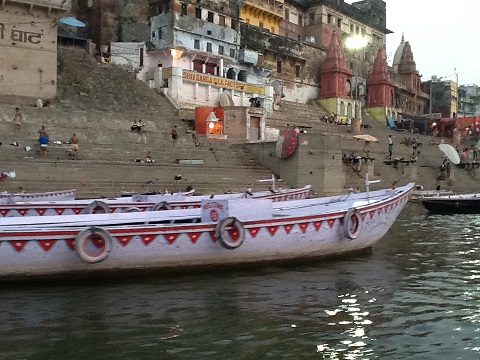
I love taking pictures of simple things, like these boats.
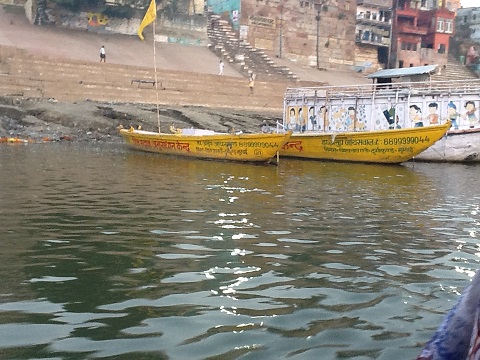
These too were really awesome.
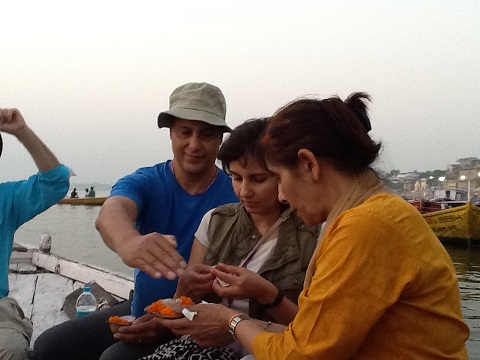
We began to get our offerings ready to be set in the water at sunrise.
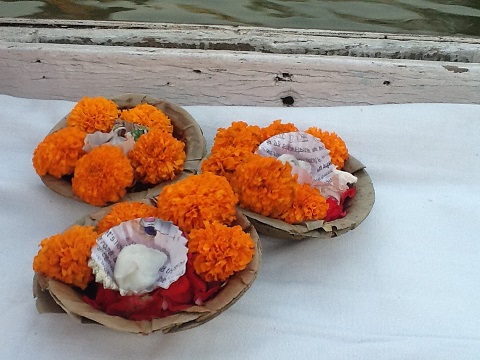
As tradition would have it, any church I go into, I am always lighting candles for my three children. No different in Varanasi. Here are my three offerings to the Mother Ganges in hopes that she will look over my children and keep them happy, safe and healthy.
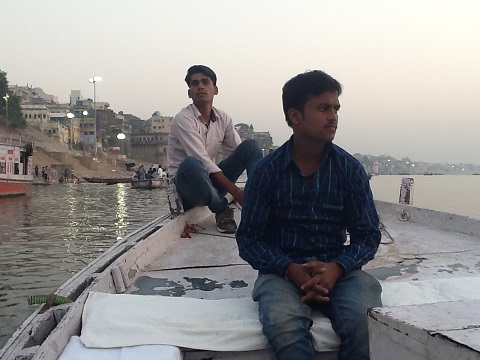
Our boat hosts slowed the boat down so that we could set our offerings in the water after lighting the candles
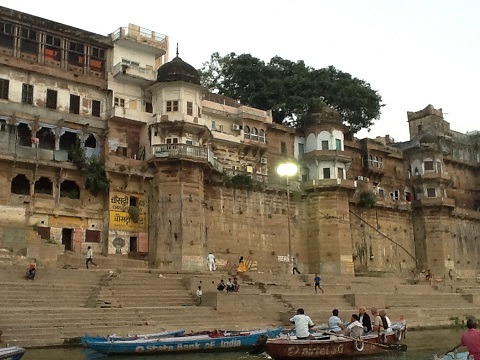
More beautiful buildings, some of these are privately owned, some are hotels.
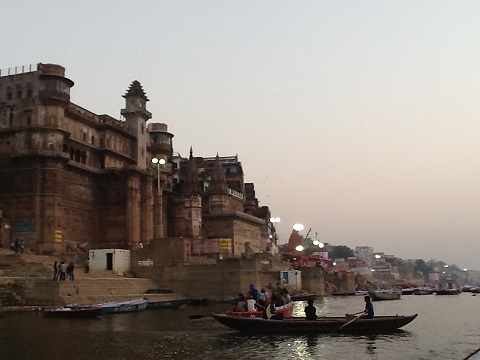
It was almost time as we sat in anticipation of the sunrise
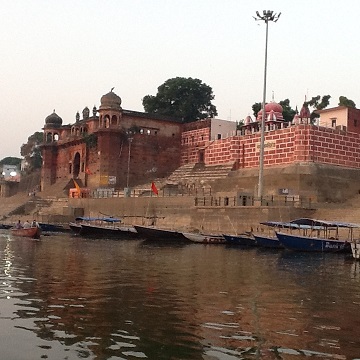
Some of the ghats were really quiet, with not much morning action.
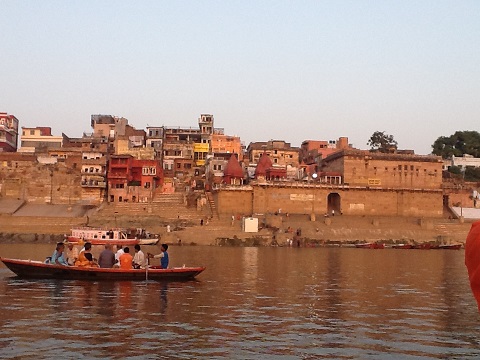
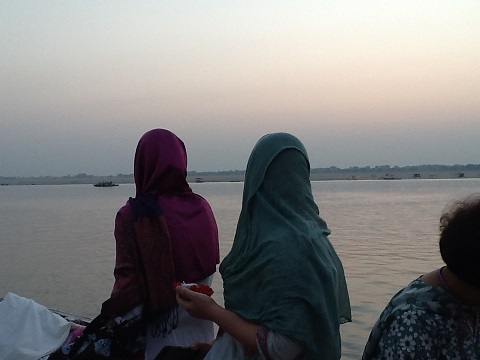
Here Hannah and Sondra, in their veils, were ready to place their offerings into the river.
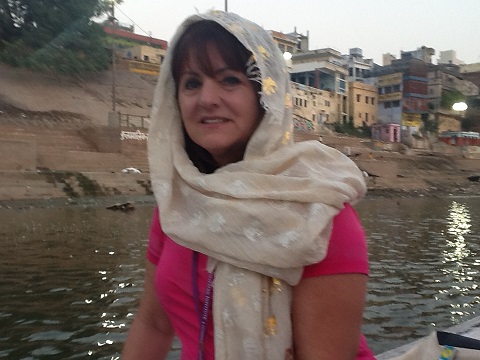
Here I am. I am not much for head coverings but sometimes it’s just the right thing to do.
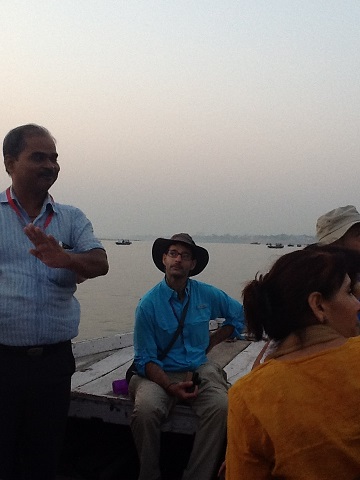
Our guide tells us more about what we are seeing.
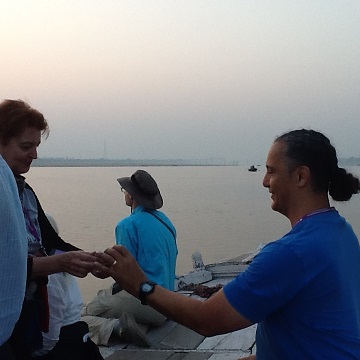
Friends enjoying this time together.

There were a lot of boats out on the river now,
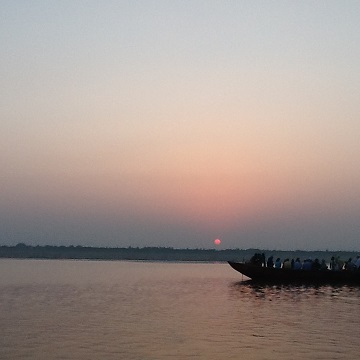
Here it came, it was just beautiful and so peaceful in and amongst the chaos.
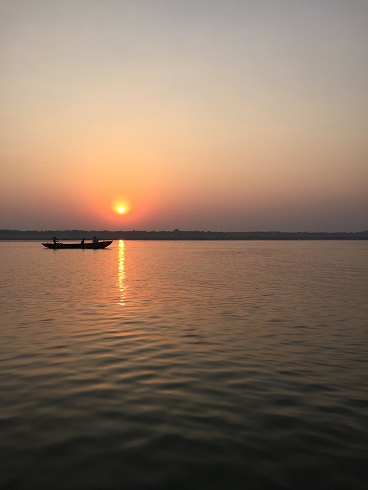
Let’s just say the pollution level gives for some great sunrise pictures in India.
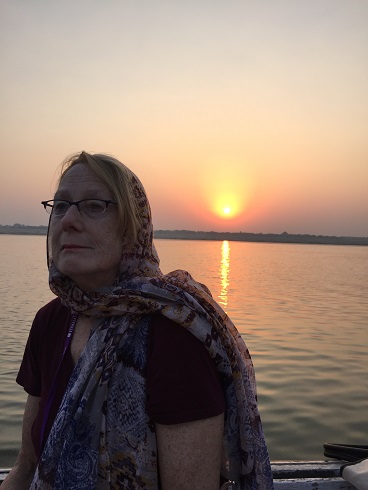
Here is my friend Jane looking quite peaceful in the moment.
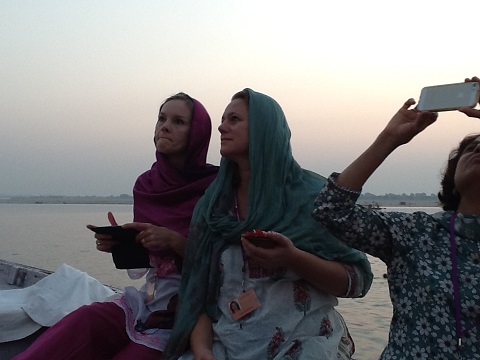
Hannah and Sondra taking it all in.
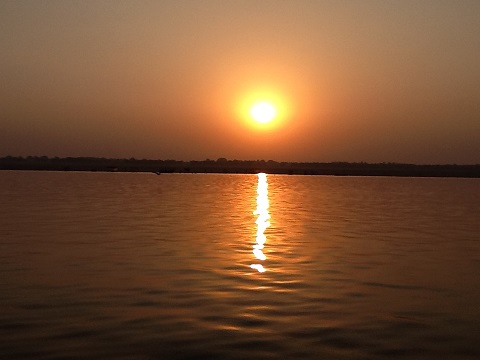
It just became more beautiful as it rose higher above the river.
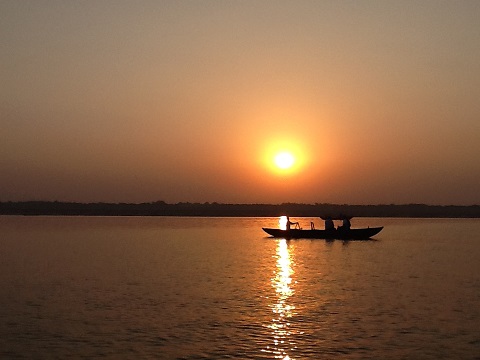
Love this picture with just a boat in the light line.
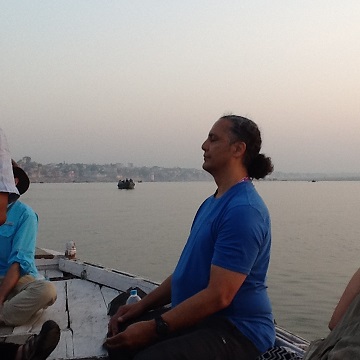
It was time for a little meditation.
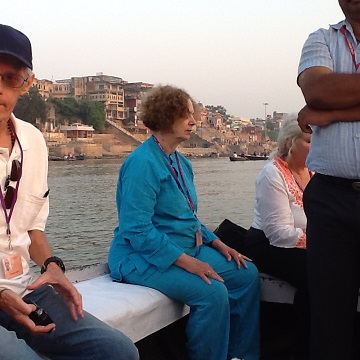
As this most auspicious time of day was upon us.
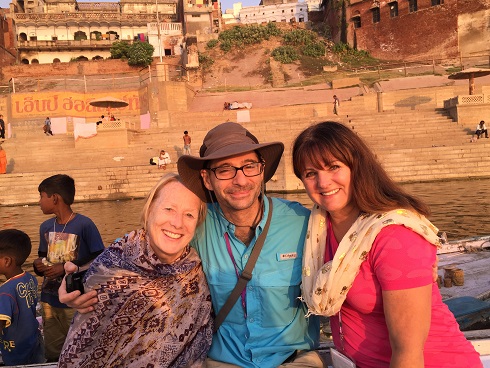
Then it was time for pics. Here Joseph, Jane and I with the ghats in the background
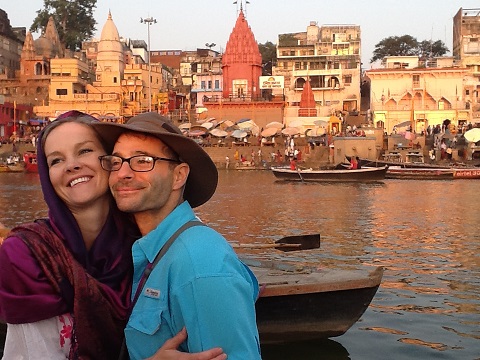
Joseph and Sondra teaming up for this one.
Then we were asked to put our cameras away and be very quiet. We were approaching Manikanika Ghat or the crematorium.
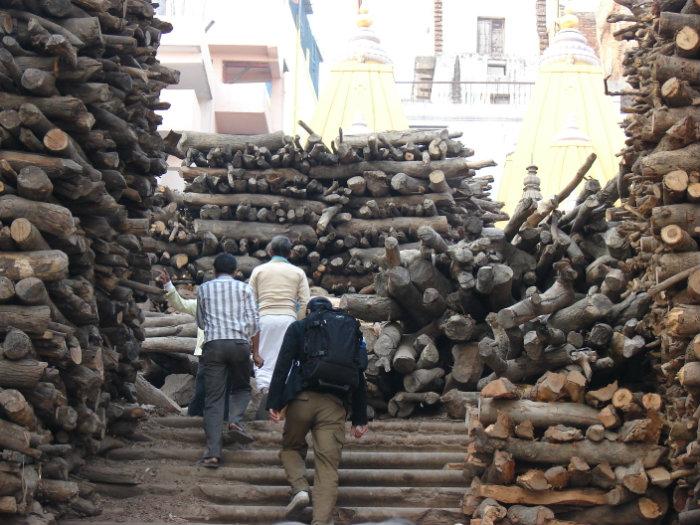
We did not see any funeral processions, but they are quite common. “The dead body is carried on a stretcher decorated with flowers. At the head of the procession are seen relatives and friends of the deceased, moving to the accompaniment of chant: ‘Tam Nam Satya Hai (Truth is God, God is Truth). The procession terminates at the Manikarnika or Harishchandra ghat, where the body is burnt on a pyre. It is not only the people from Varanasi who chose this type of funeral. There is a special connotation the city has with respect to Karma and death. In the chosen city of Shiva, entry of Yamraj, the Hindu god of death is barred and everyone who dies here is assured of Moksha (freedom) and the concept of bad Karma and punishment in hell does not exist. It is said that at the moment of death Shiva reveals himself and whispers in the ears of the dying man the Taraka mantra or the mantra of the Great Crossing, ensuring that he transcends the cycle of birth and death and becomes one with the universe. A mantra is a kind of formula which a guru gives to his disciple to open the doors of knowledge. Thousands of people from all over the country, therefore come to Varanasi to die and attain Moksha. Death holds no terror for one who dies in Varanasi, for it is transformed by Shiva’s blessing from a curse into one of life’s most precious gifts.” (Banaras, Roli Books)


Since we were not allowed to take pictures, these pictures came from the book, Banaras, by Roli Books. They do not even come close to conveying the sight in person. I have to say of all the things I have seen around the world, this was one of the most awesome, sad, mysterious, creepy, beautiful and moving sights and experiences I have ever had. I am so blessed to have gotten to be there on that day.
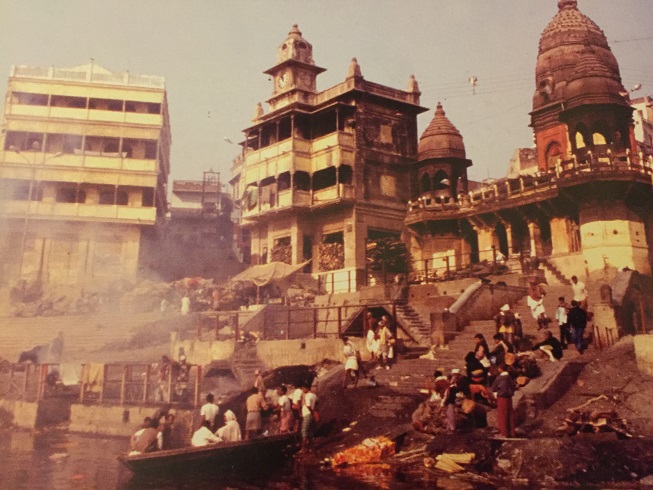
It was really moving seeing the small fires burning knowing there were bodies being burned right then.
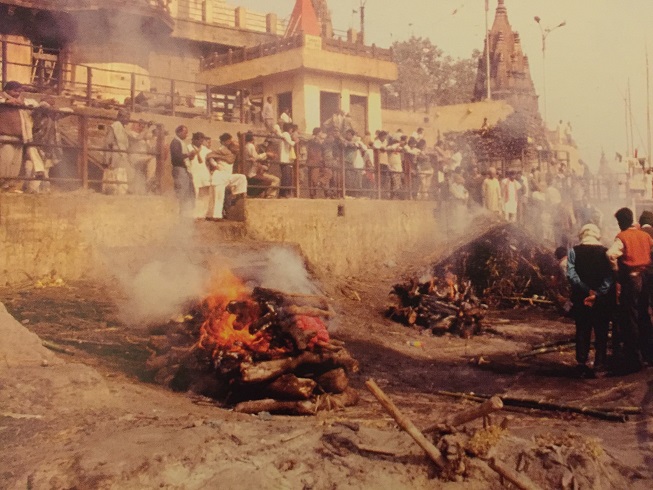
This was one of many ghats were these burnings took place.
After spending a few minutes in silence we were off again.
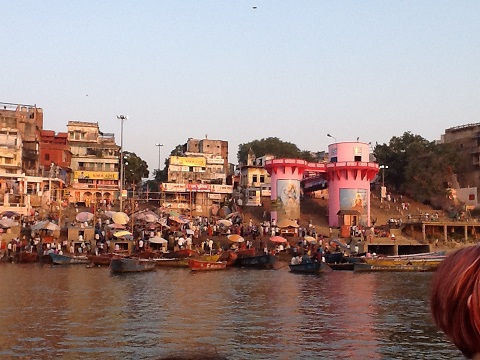
We headed back to the boat dock. So full and yet it was just early morning.
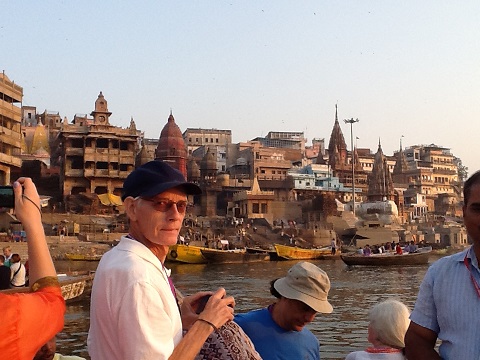
One more look at the river and it was time to move on.
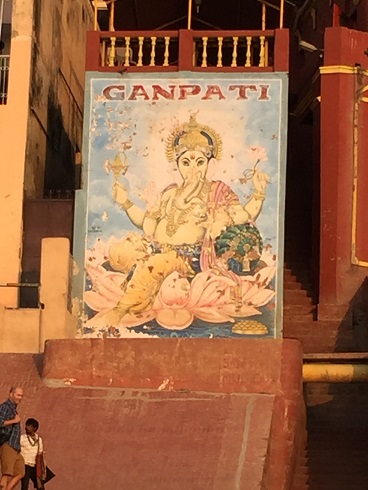
The boat was coming into dock and we saw this big picture of Ganesha, it just seemed fitting.
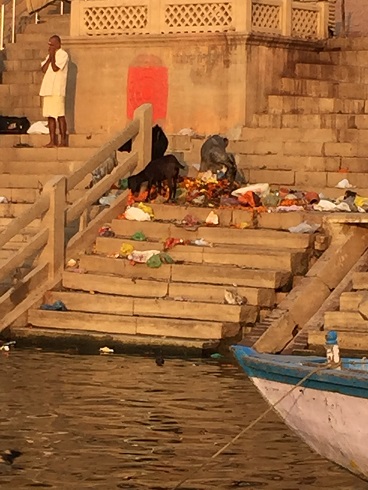
Back to where we began earlier that morning,
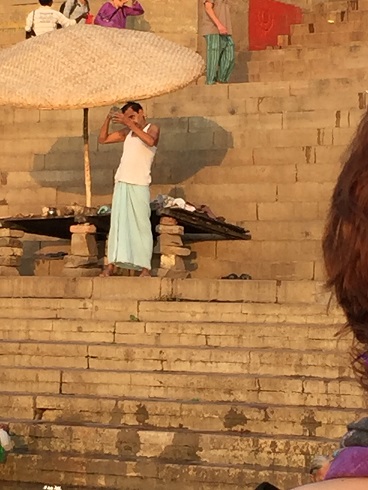
One last bather, getting ready for the day.
We are off to a temple so don’t miss my next blog. Thanks for reading and sharing, I hope you are enjoying Varanasi.
Namaste, Peggy
